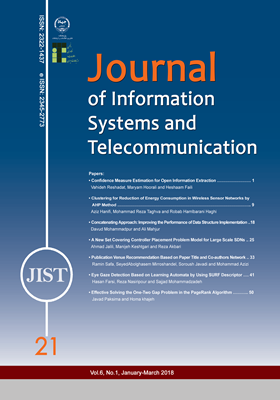-
-
List of Articles
-
Open Access Article
1 - Confidence measure estimation for Open Information Extraction
Vahideh Reshadat maryam hourali Heshaam Faili -
Open Access Article
2 - Clustering for Reduction of Energy Consumption in Wireless Sensor Networks by AHP Method
Mohammad Reza Taghva Robab Hamlbarani Haghi Aziz Hanifi Kamran feizi -
Open Access Article
3 - Concatenating Approach: Improving the Performance of Data Structure Implementation
dmp dmp Ali Mahjur -
Open Access Article
4 - A New Set Covering Controller Placement Problem Model for Large Scale SDNs
احمد جلیلی رضا اکبری منیژه کشتگری -
Open Access Article
5 - Publication Venue Recommendation Based on Paper’s Title and Co-authors Network
Ramin Safa Seyed Abolghassem Mirroshandel Soroush Javadi Mohammad Azizi -
Open Access Article
6 - Eye Gaze Detection Based on Learning Automata by Using SURF Descriptor
Hassan Farsi Reza Nasiripour Sajad Mohammadzadeh -
Open Access Article
7 - Effective solving the One-Two Gap Problem in the PageRank algorithm
Javad Paksima Homa Khajeh
-
The rights to this website are owned by the Raimag Press Management System.
Copyright © 2017-2025







